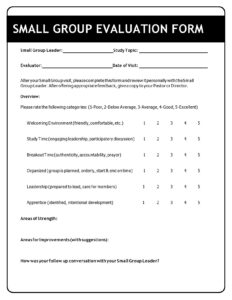Understanding whether your product truly resonates with your target audience is crucial for long-term success. It’s not just about having a great idea or a well-built product; it’s about ensuring that product genuinely fulfills a strong market need. This sweet spot, known as product market fit (PMF), is often elusive but incredibly powerful. Achieving it means your product is solving a real problem for a sizable group of people, leading to organic growth and sustained engagement.
But how do you really know if you’ve hit this elusive mark? While revenue and active users are strong indicators, they don’t always tell the full story of user sentiment and unmet needs. That’s where a well-designed product market fit survey template comes into play. It provides a structured way to gather direct feedback from your users, helping you pinpoint what’s working, what’s not, and most importantly, how indispensable your product has become to them. It’s an essential tool for any product team serious about growth and user satisfaction.
Crafting Your Ideal Product Market Fit Survey Template
Designing an effective product market fit survey template isn’t just about throwing a few questions together. It requires thoughtful consideration of what you need to learn and how best to extract that information from your users. The goal is to uncover genuine insights into how users perceive your product, how they use it, and how much they would miss it if it disappeared. This goes beyond simple satisfaction scores and delves into the emotional connection and dependency users have developed. A great survey acts like a diagnostic tool, pointing you towards areas of strength to leverage and weaknesses to address.
When you’re building out your template, think about the different facets of the user experience. You want to touch on their initial expectations, their actual usage patterns, the value they perceive, and their overall emotional response to the product. It’s a mix of quantitative data that gives you hard numbers and qualitative feedback that provides rich, nuanced understanding. The magic happens when these two types of data intersect, offering a comprehensive picture of your product’s standing in the market. Remember, the clearer your questions, the more actionable your feedback will be.
One of the most famous and effective questions for gauging product market fit is the "would you be very disappointed" question, popularized by Sean Ellis. This question cuts straight to the core of user dependency and is a powerful indicator of PMF. However, a single question isn’t enough to build a robust product market fit survey template. You need a series of questions that complement each other, painting a full picture of your users’ experiences and needs. Consider starting broad and then narrowing down to specifics, allowing users to express themselves freely.
Key Categories for Your PMF Survey
- **Demographics and User Context:** Who are your users? What’s their role or background? Understanding their context helps you segment responses later.
- **Product Usage and Value Perception:** How often do they use your product? What problems does it solve for them? What features are most valuable?
- **The “Disappointment” Question:** “How would you feel if you could no longer use [Product]?” (Options: Very disappointed, Somewhat disappointed, Not disappointed). Aim for at least 40% “very disappointed.”
- **Alternatives and Competition:** What would they use if your product wasn’t available? This highlights your unique selling proposition and competitive landscape.
- **Suggestions and Improvement:** What features are missing? What could be improved? This taps into unmet needs and future development opportunities.
Adding open-ended questions alongside multiple-choice or Likert scales provides invaluable qualitative data. These free-form responses often contain the most surprising and actionable insights, revealing nuances that structured questions might miss. Encourage users to elaborate on their answers, giving them space to share their full perspective.
Distributing and Acting on Your PMF Survey Insights
Once you’ve meticulously crafted your product market fit survey template, the next crucial step is getting it into the right hands and, more importantly, understanding what the responses mean. The timing and audience for your survey are just as vital as the questions themselves. You want to target active users who have had enough experience with your product to form an informed opinion. Sending it too early might yield lukewarm responses, while waiting too long could mean you miss opportunities for early course correction. Consider segmenting your users based on their engagement levels or specific features they use, as this can reveal different PMF levels within your user base.
Distributing your survey can be done through various channels. In-app notifications are often effective for reaching active users directly. Email campaigns can also work well, especially if you have a strong relationship with your user base. Tools like SurveyMonkey, Typeform, or Google Forms make it easy to create, distribute, and collect responses efficiently. Ensure your survey is mobile-friendly and concise, as long, complex surveys often lead to high drop-off rates. Remember, a high response rate is indicative of engaged users, which is a good sign in itself.
After gathering the responses, the real work begins: analysis. Don’t just look at the raw numbers; dig deeper. For the "disappointment" question, track the percentage of users who would be "very disappointed." If it’s below 40%, you likely haven’t hit PMF yet, and that’s okay – it’s a signal to iterate. For open-ended questions, look for recurring themes, common pain points, and frequently requested features. Categorize and tag these qualitative responses to identify patterns. This thematic analysis can be incredibly revealing, highlighting shared sentiments and underlying needs across your user base.
- **Segment Your Data:** Look at responses by different user cohorts (e.g., power users vs. occasional users, new vs. old users, different demographics).
- **Identify Key Drivers:** What specific features or aspects of your product are most correlated with the “very disappointed” responses?
- **Spot Red Flags:** Are there recurring complaints or frustrations that indicate a significant problem area?
- **Prioritize Improvements:** Based on the feedback, what are the top 2-3 areas that, if improved, would most impact user satisfaction and product market fit?
- **Communicate and Iterate:** Share findings with your team and use them to inform your product roadmap. This isn’t a one-time activity; PMF is something you continuously monitor and strive for.
This data should directly feed into your product development cycle. The insights from your survey aren’t just for understanding; they are for action. Use them to validate assumptions, inform feature prioritization, and refine your messaging. By consistently listening to your users through a well-executed survey, you ensure your product continues to evolve in a way that deepens its fit with the market, driving sustained success and user loyalty.
The journey to strong product market fit is ongoing, not a one-time destination. By regularly deploying a thoughtfully designed survey, you maintain a finger on the pulse of your users’ evolving needs and perceptions. This continuous feedback loop is invaluable for adapting your product to remain relevant and indispensable in a dynamic market.
Ultimately, understanding and nurturing your connection with your audience through direct feedback is the cornerstone of building products that truly matter. It allows you to transform raw data into actionable insights, ensuring every product decision is rooted in genuine user value. This diligent approach paves the way for a product that not only survives but thrives.


